
I reviewed Jeff's book on Julia Margaret Cameron's Fancy Subjects here and thoroughly enjoyed his insight into her photography, so I was delighted to be asked to review this one. I must admit that tackling the colonial aspect of JMC when I wrote Light and Love was complicated as arguably it was in everything she did and that, put very simply, is exactly the point of this book. However, it is done with far more skill and nuance than I ever could have managed.
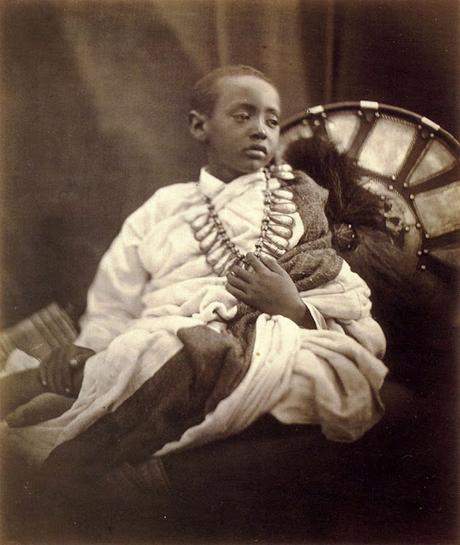
Déjatch Alámayou (1868)
Our starting point is the 1857 uprising and the following reprisals in India after which Queen Victoria dissolved the East India Company. As you will know, Julia Margaret Cameron and her family and friends were very much involved with the East India Company, by family involvement, by marriages and very obviously socially. It is unavoidable then that this would have an impact on her art and society. Included in the prologue is Thackeray's poem 'Arthur's First Wound' from 1858. I am a great lover of language and this poem, with phrase such as 'our English Arthur,' 'God be with the right,' 'The Davids of our land' and 'the Giant of Revolt,' is exceptionally loaded. The name of the child invoked, Arthur, speaks not only to Arthur Wellesley, Duke of Wellington (who died in 1852), but also King Arthur, England's own mythical Jesus-king who will rise again. Likening England to David against India's Goliath is so unhinged that I had to read it a couple of times to make sure I wasn't missing something. Most disturbingly, Thackeray says 'God be with the right,' which is as loaded as calling the uprising against the occupying force a 'Mutiny'. The language used in conflict never fails to horrify and intrigue me, and all this can be applied to a number of conflicts and no doubt upcoming elections now. Thackeray was a close friend of the Pattle sisters and his daughters remained close to JMC for the rest of her life. This is the mindset that she shared, and she was not alone.
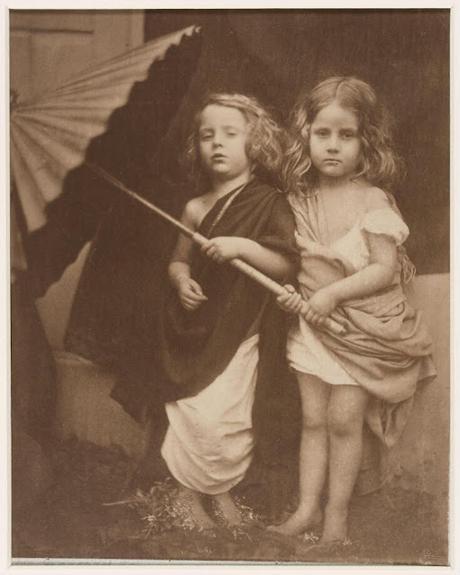
Paul and Virginia (1864)
I must agree that in the past we have separated Julia's portraits from her narrative pieces, and separated her portraits of 'important people' from those of friends and family. In this book, it is argued that this is impossible - Julia is so steeped in colonial officialdom that everyone had connections to the business of Empire, from her close male friends to her Irish beggar-maid. Whilst I would say there are degrees - the maids would not have the same concerns as the family (until they marry a civil servant, in the case of Mary Ryan) - I think the events at Lucknow effected everyone to some degree and art around it was very much of one narrative (for example this sort of thing) and I found this passage interesting - 'The Pattle clan took the news hard. Julia Margaret was depressed and literally fell ill as the terrible news spread over all England.'
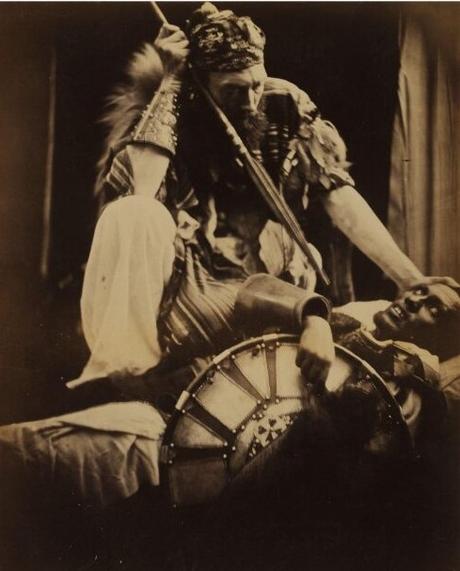
Spear or Spare (1868)
I have written about some of the most obviously colonial pieces JMC has produced, most prominently the images of little Prince Alemayehu and Captain Speedy which are not only products of colonialism but also images that are overtly about the acts of Empire, like Spear or Spare from 1868. What I hadn't considered is the background noise of colonialism in other images, such as the death images of Adeline Clogstoun.

From Death / The lovely remains of my little Adeline (1872)
I must admit to squeamishness when it comes to post-mortem Victorian images, and having seen a dead body I'm not sure why you would want a photograph of one, but I never noticed the print that is hanging on the wall behind little Adeline (probably as I was too busy trying not to think about the dead child on the bed). It is a print of a watercolour by Orlando Norie of Herbert Clogstoun, Adeline's father, and his 'charge at Madras from which he won the Victoria Cross', which JMC wrote on the white of the print in some of the images. I find it interesting that the majority of those haunting images of the child are just straight, glowing photos of the bed and body, but she couldn't resist linking the death of the child with her heroic dead father who died in the service of Empire.
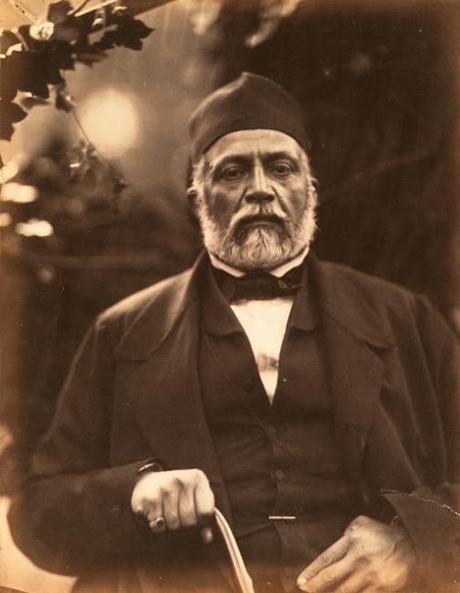
King of Oude by Right of Birth (c.1865)
When you begin to look and consider, JMC's support of the Colonial status quo is everywhere and understandably so. She was a child of Empire, as were her parents and grandparents. Her grandfather had escaped/been banished from Revolutionary France but her grandmother had never seen her ancestral France until later in life. Grandfather Ambroise De L'Etang had worked with horses in India, including for the Nawab of Oude. The East India Company changed the title from Nawab to King, signalling the move from allegiance to the Mugal Emperor to King, degrading the status of the Mugal reign. The title of JMC's photograph leans into that EIC revision, even after the Queen's dissolution of the Company and the claim of the rule back to herself as Empress. Iqbal al-Daula is the ousted King not Nawab. That is the challenge/problem/conundrum of JMC and the colonial side of Victorian life - it is difficult to unpick all the ideas (or prejudices) of the English abroad, including those that hadn't been in England for generations. It is easy to either condemn or defend the colonial set, depending on your politics and viewpoint. What is harder is to explore the products of that world in context, but this is a wonderful journey into the reasons behind that world and its resultant art and society. It changes the way you see the art, truthfully, and that is always a good thing.
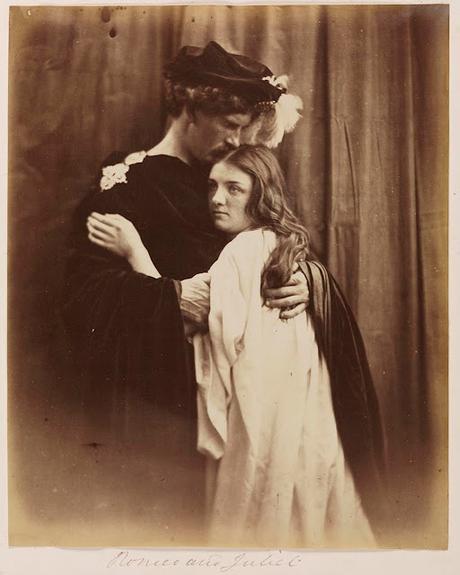
Romeo and Juliet (1867)
I really enjoyed this large, beautifully illustrated and extremely thoughtful book. Colonialism is a very important lens in which to view all aspects of our history and Julia Margaret Cameron's art and life are perfect to turn this lens on. I think there is a lot of defensiveness about our colonial history and there need not be as it explains so much of our past and present. This examination of Empires, both in reality and of the mind, can give a wonderful new view of JMC's art and it is beautifully examined and explained by Jeff Rosen. I have read (and indeed done) writing on Julia's colonial ties and influences but this new book gives a fuller and more comprehensive view of her life, society and art in this light which is extremely satisfying. I can't recommend it enough.
More information on Jeff's book is available here and via all good book sellers now.

